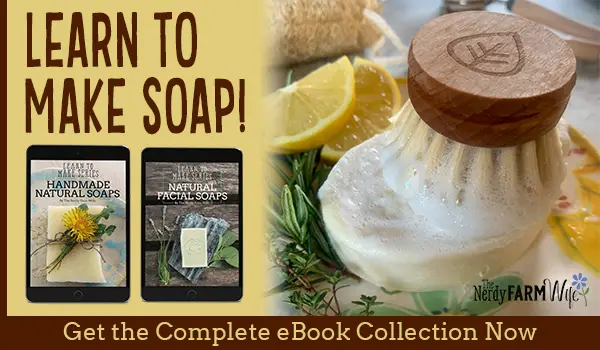Today we are making an indulgent and nourishing sandalwood soap containing ghee.
Red sandalwood (Pterocarpus santalinus) is treasured in Chinese Traditional Medicine and Ayurveda for its many benefits for the skin. It has antioxidant, anti-inflammatory, and antimicrobial properties due to the many bioactive plant compounds it contains.
It has been known to naturally cleanse the skin while reducing the appearance of acne, and ageing and also it brightens and tones skin giving it a radiant glow.
Sandalwood today is used in many products including face packs, body scrubs, skin creams and shampoos and conditioners.
The red sandalwood powder I used in this soap was purchased from a local puja store in my area, but it can be sourced online as well.
Using Ghee in Handmade Soap
Another product that is well-prized in the Ayurvedic tradition is clarified butter or ghee. Also known as liquid gold, ghee is traditionally used in Indian cuisine. Now, however, it is becoming widely available as its popularity is growing due to its health benefits and therapeutic properties.
Ghee can be used topically to moisturize skin and in hair care to soften and condition the hair and prevent split ends. It is rich in vitamins A, E and K and has antioxidant properties.
Cow ghee is high in palmitic and oleic fatty acids. Palmitic acid contributes to the hardness of the soap as well as the bubbles and creaminess. Oleic acid contributes to the moisturizing and conditioning properties of the soap.
Note, cow or bovine ghee is not the same as vegetable ghee and the fatty acid profile would be different.
Some soapmakers find that unscented soap made with ghee leaves an unpleasant scent after curing. For this reason, it may be best to include a fragrance or essential oil in the recipe.
The fragrance oil I used in this soap is Sandalwood and Rose. It perfectly pairs the earthy, woodsy smell of sandalwood with the sweet floral fragrance of rose petals.
Also, the brand of ghee I used for this soap is Anchor Cow Brand Ghee.
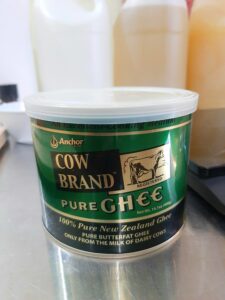
This soap recipe uses a 5% superfat.
(In soap making, “superfat” refers to the percentage of oils or fats that remain unsaponified in the final soap product.)
Ingredients
- 14 oz. Olive oil
- 10 oz. Coconut oil
- 6 oz. Ghee
- 2 oz. Castor oil
- 4.71 oz. Sodium hydroxide
- 12.15 oz Distilled water
- 6.5 grams Sandalwood powder
- 1 oz. Fragrance or essential oil
Directions to Make Sandalwood Soap with Ghee
Safety first!!! Before you begin the soap-making process, ensure that you are wearing protective gear such as gloves, goggles, and long-sleeved clothing to protect your skin and eyes. Also, ensure that there are no children and pets in your working area.
Gather all your tools and ingredients.
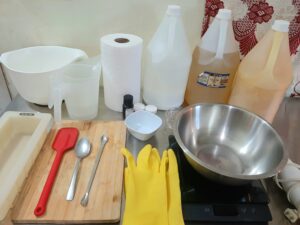
In a stainless steel or heatproof container, weigh the water.
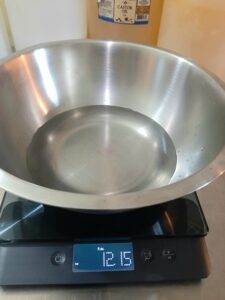
In another dry container, weigh the sodium hydroxide.

In a well-ventilated area, slowly and carefully add the sodium hydroxide to the water, in that order, never the other way around, and stir gently until it is dissolved completely. Set it aside in a safe area away from children and pets and allow it to cool to room temperature.
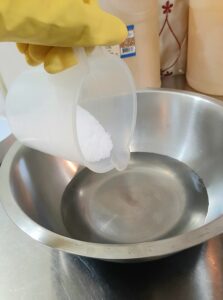
Next, measure out your oils and add them to the main mixing container.
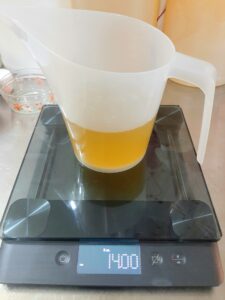
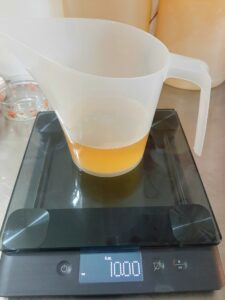
Weigh the ghee.
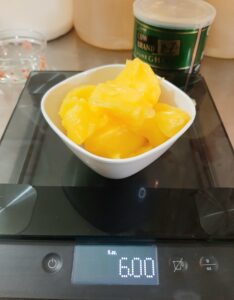
Weigh the fragrance or essential oil in a glass or ceramic container. Avoid using plastic as fragrance and essential oils can degrade plastic.
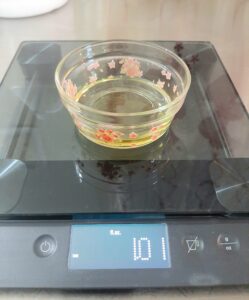
Weigh the sandalwood powder.
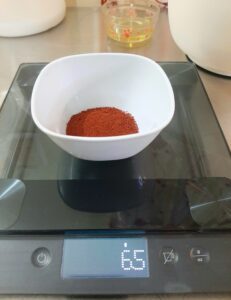
Using a heat-resistant container, in a double boiler or in the microwave gently melt the ghee until in liquid form. Do not overheat.
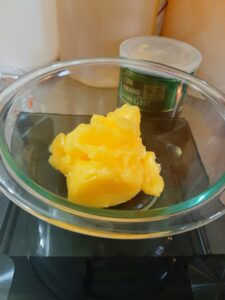
Now that everything is prepared, clear away the unnecessary tools and ingredients and we are now ready to make the sandalwood soap with ghee.
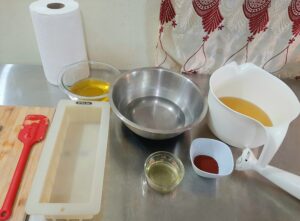
Add the melted ghee to the mixing bowl with the oils.
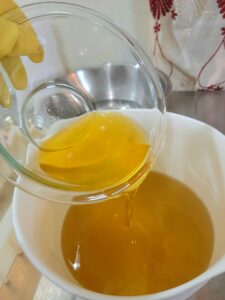
Add the sandalwood powder to the mixing bowl.
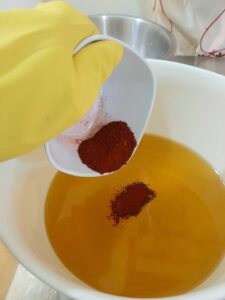
Using the immersion blender, blend until the powder is fully mixed with the oils.
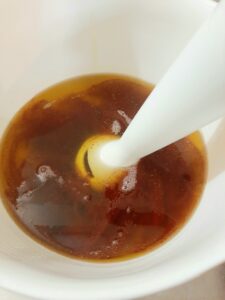
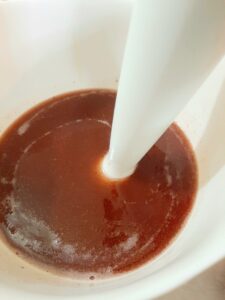
Next, carefully add the sodium hydroxide (lye) solution to the oils.
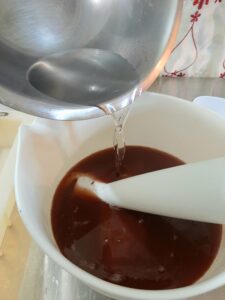
Blend until the mixture is emulsified.
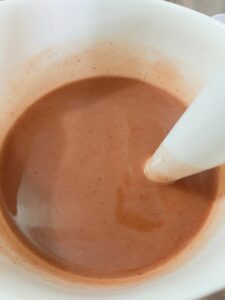
Next, add the fragrance or essential oil.
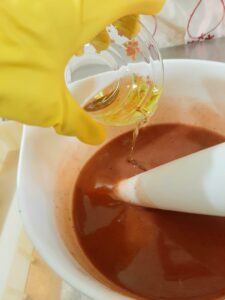
Using a combination of pulsing and stirring with the immersion blender, mix the soap batter thoroughly until trace is achieved. Trace is the point where the soap thickens and when drizzled back on itself, it leaves a trail or ‘trace’ on the top of the batter as pictured below.
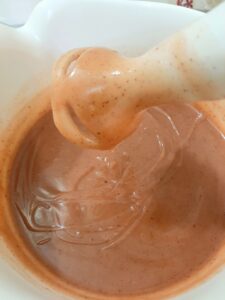
At this point, the soap is ready to be poured into the mould.
You can texture the top with a stainless steel spoon or fork or use a wooden skewer to create your own designs.
![]()
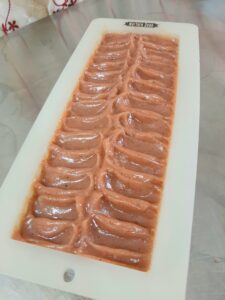
Place the soap in an area where it will not be disturbed and allow it to solidify for 24 hours.
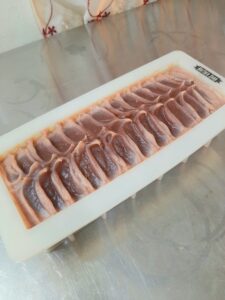
After 24 hours, remove the soap from the mould and cut it into bars.
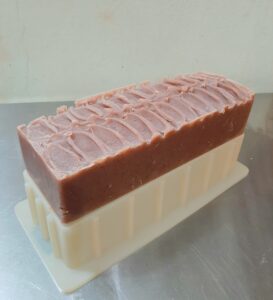
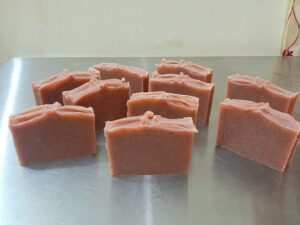
Place the soap bars on a shelf and allow them to cure for a period of 4 to 6 weeks. After the cure period, your sandalwood and ghee soaps will be ready to use.
Sandalwood is renowned for its calming and anti-inflammatory properties, making it an ideal component for soap-making. Combining it with ghee makes for a luxurious and moisturizing soap that is sure to leave your skin feeling soft, smooth, and refreshed.
Happy soaping! 🙂
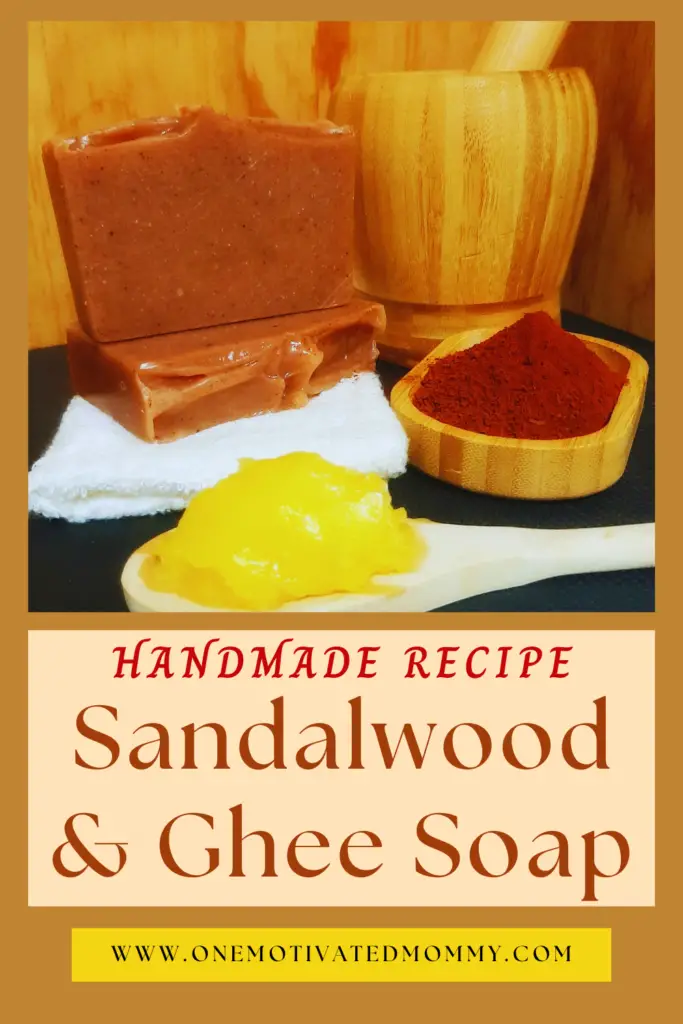
![]()

